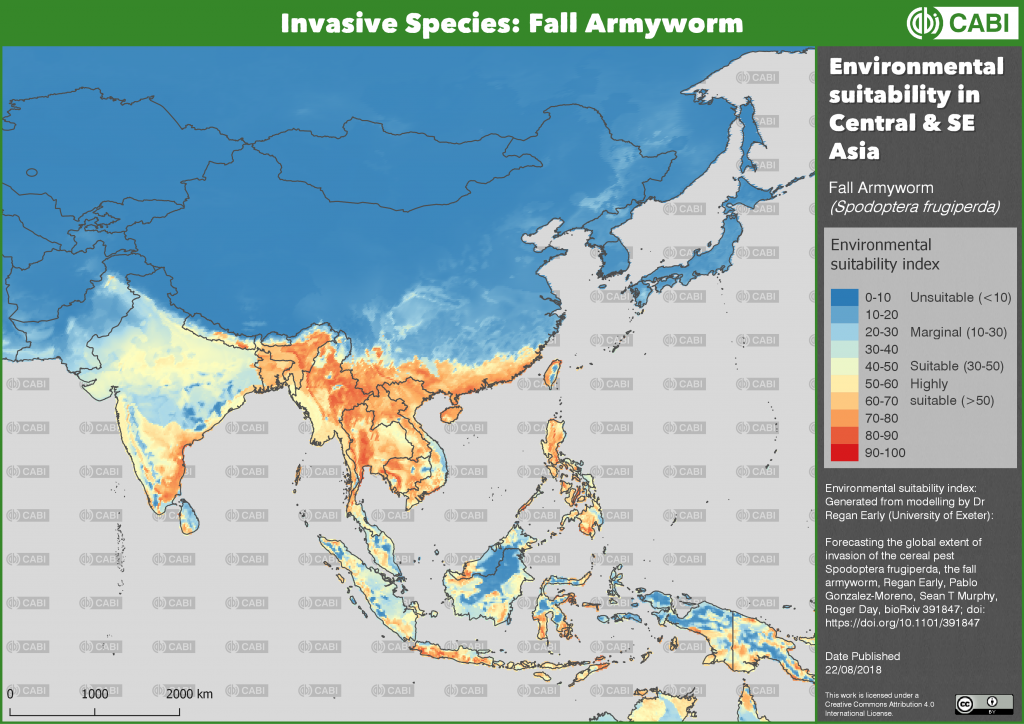Raising rural awareness of Parthenium in Pakistan
Parthenium hysterophorus is a noxious weed and a growing threat for agriculture, human health as well as the economy. In Pakistan, it has been reported that this weed is present almost everywhere, but the dilemma is that the general public have little to no knowledge about its harmful impacts. Keeping in view these facts, CABI…
CABI unveils action plan to fight highly invasive and destructive weed
Parthenium weed causes harm to the environment, health, as well as the economy. CABI has launched a comprehensive action plan aimed at combating the scourge of Parthenium, a highly invasive species of weed, prevalent and spreading in Pakistan.
Citizen Scientists attempt traditional solutions against fall armyworm
First reported in Africa in September 2016, fall armyworm (Spodoptera frugiperda) is now present in most sub-Saharan countries, where severe damage in maize fields has been observed. Kenya is one the countries that has not been spared the wrath of this invasive pest. Since it was first reported in Kenya’s western region (Trans Nzoia, Busia,…
Tackle invasive species to restore degraded landscapes
By Gilbert Nakweya Reblogged from SciDev.Net Invasive alien species should not be used in restoring degraded landscapes as their costs outweigh their benefits, experts say. Invasive alien species, according to the Convention on Biological Diversity, are plants, animals and other organisms that are non-native to an ecosystem, and may adversely affect human health and the…
CABI calls for urgent action to tackle the global spread of invasive species
In response to the growing threat of invasive species, the Centre for Agriculture and Biosciences International (CABI) has called for urgent action to tackle the global spread of invasive species, even as the recent fall armyworm outbreak casts doubts over Africa and Asia’s preparedness to fight the scourge. CABI is a not-for-profit organisation that draws…
Workshops to combat Parthenium in Pakistan
A training session was recently organized by CABI in Pakistan on the identification and management of Parthenium Hysterophorous to a variety of stakeholders. These activities were part of the Parthenium awareness campaign which CABI has launched under Action on Invasives, in the Sheikhupura district (Pilot district), Punjab focusing particularly on rural communities.
Where next for fall armyworm?
Since its confirmed arrival in Nigeria in 2016, the fall armyworm has conquered almost 25.5 million square kilometres of Sub-Saharan Africa, reaching as far east as Ethiopia, and as far south as South Africa. Now fall armyworm has reached beyond African shores and was recently confirmed in India, with CABI warning of its now impending…
Using DNA to detect a stinkbug invasion
The use of DNA to detect a stinkbug invasion proposes a revolutionary advancement in agricultural pest surveillance following the success recorded on a piloted experiment conducted on farms in the USA. These interlopers attack all manner of produce, ranging from fruits to leafy vegetables. However, the adoption of DNA techniques in detecting its early invasion…
CABI warns of rapid spread of crop-devastating fall armyworm across Asia
CABI scientists have today warned of the impending rapid spread of the crop-devastating pest, fall armyworm, across Asia following its arrival in India, with major crop losses expected unless urgent action is taken. The warning comes following a pest alert published this week by the Indian Council of Agricultural Research (ICAR) on the website of one of…









